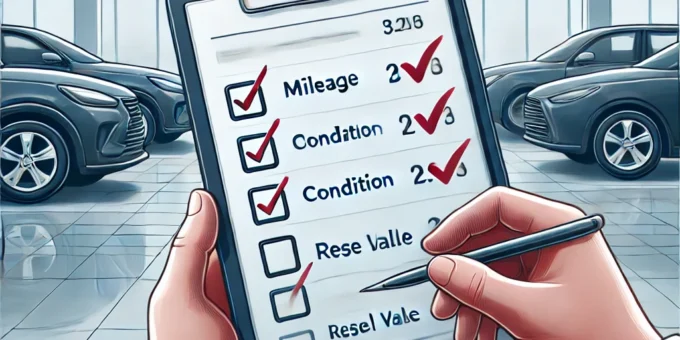
Buying a used car can be a smart and cost-effective decision, but finding the right one requires careful evaluation. Key factors like mileage, overall condition, and resale value play a significant role in determining whether a used car is worth your investment. Comparing these aspects can save you from future headaches and ensure you’re getting the best value for your money.
This guide will walk you through how to compare used cars effectively, focusing on mileage, condition, and resale value to help you make an informed choice.
Introduction
The used car market offers a wide variety of options, but choosing the right vehicle requires more than just comparing price tags. A car’s mileage, condition, and resale value determine not only its current worth but also its reliability and long-term financial impact.
By evaluating these factors, you can narrow down your choices and confidently select a car that aligns with your needs and budget.
Why Mileage, Condition, and Resale Value Matter
- Mileage: Indicates how much wear and tear the car has endured.
- Condition: Reflects the car’s overall maintenance and usability.
- Resale Value: Determines the car’s long-term financial viability and market demand.
Step-by-Step Guide to Comparing Used Cars
1. Evaluate Mileage
Mileage is a key indicator of a car’s age and usage. However, it’s not the only factor to consider—context matters.
Low Mileage
- Generally indicates less wear and tear.
- Ideal for cars that are less than 5 years old.
High Mileage
- May still be a good option if the car has a well-documented maintenance history.
- Modern engines can handle higher mileage if properly cared for.
Pro Tip: The average car racks up about 12,000–15,000 miles per year. Compare the car’s mileage with its age to see if it aligns with typical usage.
2. Inspect the Car’s Condition
The condition of a used car directly affects its reliability and longevity. Look beyond the exterior and focus on the following areas:
Exterior
- Check for dents, scratches, and rust spots.
- Inspect the tires for even wear and sufficient tread depth.
Interior
- Look for stains, tears, and signs of wear on the seats and carpets.
- Test all electronics, including the infotainment system, lights, and power windows.
Under the Hood
- Inspect the engine bay for leaks, corrosion, and unusual odors.
- Check the oil, coolant, and brake fluid levels.
Test Drive
- Listen for unusual noises during acceleration and braking.
- Assess how the car handles and whether it feels smooth and responsive.
Pro Tip: Hire a trusted mechanic for a pre-purchase inspection to uncover potential issues.
3. Assess Resale Value
A car with strong resale value can save you money in the long run by retaining its worth over time.
How to Estimate Resale Value
- Research the car’s depreciation rate—luxury cars typically lose value faster than economy cars.
- Use tools like Kelley Blue Book (KBB) or Edmunds to check the car’s market value.
- Compare the car’s price with similar models to ensure you’re not overpaying.
Pro Tip: Popular brands like Toyota and Honda tend to hold their value better due to reliability and demand.
Comparing Used Cars: Key Factors
| Factor | What to Check | Why It’s Important |
|---|---|---|
| Mileage | Total miles driven and maintenance history | Impacts wear and tear, future reliability |
| Condition | Exterior, interior, engine, and electronics | Affects usability and repair costs |
| Resale Value | Depreciation rate and market demand | Determines long-term financial impact |
Additional Tips for Comparing Used Cars
1. Check the Vehicle History Report
- Use services like Carfax or AutoCheck to review accident history, title status, and past ownership.
2. Compare Maintenance Records
- A well-maintained car with detailed service records is more reliable than one with gaps in its history.
3. Factor in Ownership Costs
- Calculate insurance premiums, fuel efficiency, and potential repair costs to understand the car’s true cost of ownership.
4. Compare Warranties
- Look for certified pre-owned (CPO) vehicles that come with extended warranties and rigorous inspections.
5. Negotiate the Price
- Use your research on mileage, condition, and resale value to negotiate a fair price with the seller.
Sedans vs. SUVs: Which is Better in the Used Market?
| Feature | Sedan | SUV |
|---|---|---|
| Fuel Efficiency | Better fuel economy | Higher fuel consumption |
| Space | Compact and less cargo space | More passenger and cargo space |
| Maintenance Costs | Lower repair and upkeep costs | Higher maintenance costs |
| Resale Value | Depreciates faster | Retains value longer, depending on brand |
Pro Tip: Choose a sedan for city driving and fuel efficiency; opt for an SUV if you need space and versatility.